Research Article Open Access
Effectiveness of Manual Perturbation Exercises in Improving Balance, Function and Mobility in Stroke Patients: A Randomized Controlled Trial
| Chandan Kumar1* and Nawaj Pathan2 | |
| 1Department of Physiotherapy, School of Allied Health Sciences, Sharda University, India | |
| 2MPT (Neurology), MGM'S School of Physiotherapy, Mumbai, India | |
| *Corresponding Author : | Chandan Kumar Associate Professor, Department of Physiotherapy School of Allied Health Sciences, Sharda University Neurological Physiotherapy, C-20, Delhi Police Housing Society Sector PI-1, Greater Noida, UP 201308, India Tel: +918087518006 E-mail: ptchandan221@yahoo.co.in |
| Rec date: January 29, 2015; Acc date: February 22, 2016; Pub date: February 29, 2016 | |
| Citation: Kumar C, Pathan N (2016) Effectiveness of Manual Perturbation Exercises in Improving Balance, Function and Mobility in Stroke Patients: A Randomized Controlled Trial. J Nov Physiother 6:284. doi:10.4172/2165-7025.1000284 | |
| Copyright: © 2016 Kumar C, et al. This is an open-access article distributed under the terms of the Creative Commons Attribution License, which permits unrestricted use, distribution, and reproduction in any medium, provided the original author and source are credited. | |
Visit for more related articles at Journal of Novel Physiotherapies
Abstract
Background and objective of study: Following stroke hemiplegic or hemiparetic patients presented with more postural sway, asymmetric weight distribution, impaired weight-shifting ability and decreased stability capability. There are many balance exercises and strategies to improve balance in stroke population to improve trunk control. There are limited evidences of giving manual perturbation based balance training in stroke patients to improve Balance, function and Mobility. Therefore, this study has been taken up to examine whether the manual perturbation balance training is effective in improving balance, function and mobility in stroke patients.
Material and Method: Thirty patients were randomly allocated into two groups, Group (Conventional PT), Group B (Manual Perturbation Exercises and Conventional PT)- with 15 patients in each group. All the patients were evaluated with Berg Balance Scale; Functional Independence Measures and Time up and Go test on pre- treatment level. At the end of 4th week, effects of intervention were assessed by Berg Balance Scale, Time up and Go Test, and Functional Independence Measures.
Results: When analysis was done between Group A and Group B, no significant difference found between BBS, TUG and FIM score in both Experimental and Control Group at pre interventional level. When comparison was done between both the groups from pre to post intervention level, the values of BBS, TUG, and FIM scores were improved at post interventional level (p=0.0001) in both groups. In the inter group comparison at post intervention level, values of BBS and TUG in the experimental Group were improved (p=0.0001), but not in FIM (p=0.240).
Conclusion: Manual Perturbation exercises combined with Conventional Physiotherapy and Conventional Physiotherapy alone are beneficial in improving Balance, Function and Mobility in stroke patients. However, the subjects treated with manual perturbation along with conventional physiotherapy showed an additional benefit in Balance, and Mobility.
| Keywords |
| Stroke; Manual perturbations; Berg balance scale; Mobility; Function |
| Introduction |
| The World Health Organization (WHO) defines stroke is the: “Rapidly developing Clinical signs of focal (or global) disturbance of cerebral function, with symptoms lasting 24 hours or longer or leading to death, with no apparent cause other than of Vascular origin [1]’’. Worldwide-about 20 million people suffer from stroke each year; 5 million may die as a consequence and 15 million will survive; of those who survive, 5 million may be disabled by their stroke [2]. The crude prevalence rate for India indicates variations according to region, prevalence rate appears to be higher in urban compared to rural populations, the overall age adjusted prevalence rate for stroke is estimated to lie between 84-262/100,000 in rural and between 334-424/100,000 in urban areas [3]. |
| Balance problems are common after stroke, and they have been implicated in the poor recovery of activities of daily living (ADL) and mobility and an increased risk of falls [4]. To maintain balance in activities of daily living (ADL), posture control is essential, while motor, sensory and higher brain cognitive factors play an important role in postural control. In stroke, patients lose functions of the motor, sensory and higher brain cognitive faculties to various degrees, which leads to diminished balance, more postural sway, asymmetric weight distribution, impaired weight bearing on affected side, impaired weight-shifting ability and decreased stability capability seen commonly [5]. Balance is an essential part of sitting, sit-to stand and walking activities. Impaired balance and increased risk of falling towards the paretic side is found to be significantly correlated with locomotor function, functional abilities and length of stay in inpatient rehabilitation facilities. Therefore, falls and injury prevention strategies are suggested as an integral part of each person’s rehabilitation plan after stroke [6]. Loss of balance problems can be due to muscle weakness and paralysis, damage to the areas of the brain that control balance i.e. cerebellum, loss of sensations in the limbs, damage to the vestibular system, spasticity or flaccidity of limbs which cause muscular imbalance, impaired vision, medications, hypotension, ataxia, poor proprioception. Since, in the stroke patients there are so many reasons that can contribute to poor balance after stroke [7]. There are various ways to retrain balance control in the stroke patients. The common balance strategies are used in balance training program are as follows. |
| In this conventional rehabilitation visual feedback combined with rhythmic weight shifting exercise given for stroke patients, weight bearing on the more affected hip and foot is encouraged and unnecessary activity of the less affected limbs (grabbing for support) are discouraged [8]. |
| Is used to assist in early standing and weight shifting on paretic limb, also can be used to instill confidence and to prevent fall [9]. |
| This is another approach in the rehabilitation of individuals with stroke. CBWS involves a forced shift of body weight towards a person's affected side by means of a shoe insert that establishes a lift of the non-affected lower extremity [10]. |
| Used to provide bio feedback and center of pressure, while in the standing on a computerized force platform system, so that patient practices the voluntary movement shift in response to computerized generated visual feedback [11]. |
| These are some others balance and posture strategies techniques used to retrain balance post stroke. The ability to recover balance without falling after a postural perturbation is an important skill for fall prevention. Balance recovery from a postural perturbation has been viewed as a fundamental motor skill that is adaptive and centrally organized based on prior experience. |
| A postural perturbation is defined as ‘Sudden change in conditions that displaces the body posture away from equilibrium’. The perturbation-based balance training (PBBT) is widely used in older adults at a high risk for falls only [12,13]. |
| Both in place and Change of support strategies are necessary for the postural stability. Additionally, instability is not confined to one plane, so it must able to control movement in variety of contexts. When patient voluntarily shifts his weight forward, backward, and side to side direction, as weight shifted more laterally to maintain stability and to keep trunk mass within the base of support, subject has to abduct his arm and leg for preventing fall. The presences of co-ordinate movement strategies play an important role in maintaining balance. |
| These movement strategies used to minimize instability in anticipation of potentially destabilizing movements. Along with muscles in the leg and trunk are activated synergistically during recovery of stability in combination with the multi-joint coordination. These are considered as the hallmarks of normal postural control [14-16]. |
| Although, Perturbation based balance exercises are expected to have an effect in the stroke patients and also there is the need to establish effectiveness of this type of balance training for stroke patients in clinical practice. |
| Moreover, there are few studies done on Perturbation Balance training in sub-acute stroke patients to improve their Balance, Function and Mobility. There are insufficient published evidences available for effects of manual perturbation exercises for sub–acute stroke patients, to improve their balance, function and mobility. Additionally, there is no such study has been done in Indian population so far, so need of this study is to evaluate the effects of manual perturbation exercises in stroke patients to improve balance, function and mobility. |
| Aim of the Study |
| Aim of the study is to find out the effectiveness of manual perturbation exercises in stroke patients to improve Balance, Function and Mobility. |
| Objectives of the study |
| • To assess whether the manual perturbation exercises are effective in improving Balance in stroke patients. |
| • To evaluate whether the manual perturbation exercises are effective in improving Mobility in stroke patients. |
| • To evaluate whether the manual perturbation exercises are effective in improving Function in stroke patients. |
| Null hypothesis {H0}: There is no significant difference on Balance, Function and Mobility of stroke patients after manual Perturbation Exercises. |
| Alternative hypothesis {Ha}: There is significant difference on Balance, Function and Mobility of stroke patients after manual Perturbation Exercises. |
| Materials and Methodology |
| Materials utilized |
| • Record or Data Collection Sheet. |
| • Consent Form |
| • Berg Balance Scale |
| • Time Up and Go Scale |
| • Functional Independence Scale(FIM) |
| • Mattress |
| • Watch. |
| • Inch tape |
| • Chairs |
| Methodology |
| • Type of study: Experimental study |
| • Study design: Randomized controlled trial. |
| • Study setting: Neuroscience department of Physiotherapy OPD, MGM Hospital Aurangabad, Other hospitals and private clinics of Aurangabad. |
| • Sample size: Total 30 Patients; Group A- 15 Conventional PT Treatments. Group B- 15 Manual Perturbation Exercises+ Conventional PT Treatment. |
| • Type of sampling: Simple Random Sampling. |
| • Duration of intervention: 4 weeks. |
| • Duration of study: 1 year |
| Inclusion criteria |
| • First ever stroke |
| • Age ranges between 40-70 |
| • Both genders were included. |
| • Ambulatory patients with or without ambulatory aids. |
| • Occurrence of stroke at within 0-3 months i.e.-sub acute |
| • Able to follow command. |
| • Mini mental scale examinations not less than 24. |
| Exclusion criteria |
| • Patients who has severe limitations in passive range of motion at lower extremities. |
| • Patients with sensory, proprioceptory, cognitive and perceptual disorders, |
| • Patient who has contracture. |
| • Orthopedic or any other neurological disorder which impair balance. |
| Outcome measures |
| • Berg balance scale (BBS): BBS is 14 Item rating 5-point ordinal Scale, used to evaluate the balance in elderly population and other neurological conditions. It is easy to administer and doesn’t require specialized training and takes 15- 20 mins. It has moderate to excellent sensitivity while measuring balance in stroke patients, maximum scoring in BBS is 56 [17-19]. |
| • Functional Independent Measures (FIM): The Functional Independence Measure (FIM) provides a seven level ordinal scale for measuring functional performance on 18 activities considered essential for daily living. In routine practice, the scores on the individual activities are usually summed giving a total FIM score that ranges from 18 to 126 [20-22]. |
| • Timed Up and Go Test (TUGT): It is prognostic test to assess mobility and to identify the individuals with a risk of fall. TUG is time performance of getting up from chair, walking 3 m, turning around and walking back to sit down again. Timed Up and Go test is recommended by American Geriatrics Society, British Geriatric Society for screening risk of falls. An older who takes more than 12 seconds to complete the TUG is at the highest risk for falling [23,24]. |
| Procedure |
| • All the patients from specified source of data were assessed and those who fulfill inclusion criteria were taken up for the study. |
| • All thirty patients were randomly allocated in to two groups, Group A - Controlled Group (Conventional PT treatment), Group B- Experimental Group (Manual Perturbation exercises and Conventional PT treatment), with 15 patients in each group. |
| • The procedure was explained to the patients and written informed consent taken. |
| • All the patients were evaluated with Berg Balance Scale; Functional Independence Measures and Time up and Go test on preintervention level. |
| • In Controlled Group (Group A) conventional PT treatment was given. Conventional Physical therapy based on ADL skills included Passive range of motion exercises, Active assistive exercises, Active exercises, Resistive exercises, Exercises in different functional positions, Weight bearing exercise, Weight shifting exercise, reaching exercises in sitting, kneeling and standing, ADL activities (Brushing, Combing, Cutting, Drinking, Eating etc.) and Gait training. |
| • In Experimental Group (Group B) manual perturbation exercises, followed by conventional PT treatment, were given to the 15 patients. Before giving manual perturbations to the patients, all possible precautionary measures were taken, to avoid risk of injuries. Manual Perturbations were given in the sitting, kneeling, standing positions on the mattress, with 10 sec hold, 10 perturbations in each position, 2 sets/6 days/week. For giving manual perturbations patients were placed into sitting positions over the couch, 5 Minutes manual perturbations were given; along with 10 sec break in between two successive sets of manual perturbations. |
| • As patient was able to regain balance following manual perturbations, progressed to next position i.e. kneeling & standing respectively. Manual Perturbations were given in both Right and Left sideways, forward and backward directions in Sitting, Kneeling and Standing. Manual Perturbations were given at the shoulder, trunk, and waist region. |
| • Total duration of the session was 45 mins; manual perturbations (5 mins) and conventional PT (40 mins) treatment for six days in a week for 4 weeks. |
| • At the end of 4th week of intervention the effects were observed by Berg Balance scale, Time up and Go Test, and Functional Independent Measures. |
| Ethical Approval and Informed Consent: Before implementing the study, an approval from Mahatma Gandhi Mission Institute of Health Sciences (MGMIHS) ethical committee was taken, Also the Informed consent was taken from patients, who were willing to participate in study. |
| *Additionally this trial was registered with Clinical Trial Registry of India (C.T.R.I.) Submission No. of Trial: - REF/2014/11/007898. |
| *Protocol of this study i.e. Manual Perturbation is also registered with ClinicalTrials.gov - Protocol Registration and Results System (PRS). |
| Data analysis |
| Data was analyzed and tabulated with SPSS version 20th (Statistical Package for Social Sciences) for windows and Microsoft Office Excel-2007. Mean, standard Deviation, Degree of freedom, confidence level, P value and significance were calculated to express the results. |
| Unpaired’ test has been done for Inter Group Comparison of Berg Balance Scale (BBS), Timed Up and Go Test (TUGT) and Functional Independence Measures (FIM) in between Experimental and Control Group for Pre and Post intervention level. |
| Paired’ test has been done for Intra –Group Comparison of Berg Balance Scale (BBS), Timed Up and Go Test (TUGT) and Functional Independence Measures (FIM) for Experimental and Control Group at Pre and Post intervention level. |
| The significant (Probability-P) has been considered as 0.05. The obtained data from the patient was organized in master chart (Annexure) various tables along with graphs derived for statistical analysis for easy interpretation of results (Figure 1). |
| Result |
| Total 45 patients were assessed and out of which 10 were excluded because they did not fulfill the inclusion criteria, 1 refused to participate in the study and 4 were not able to complete the intervention of 4 weeks (2 from each Group), so total 30 subjects divided in group A and group B and group C, 15 patients in each group. |
| Total 23 males and 7 females participated in the study. In Group A 12 were male and 3 were females whereas in Group B, 4 were males. |
| In group A 14 person was right dominance whereas only one person was left dominance, whereas in group 13 subjects were right dominance and 2 were left dominance. In total 30 hemiplegic stroke patients, in group A 10 were right hemiplegic whereas in group B 11 right side hemiplegic and 4 left sided hemiplegic. |
| Discussion |
| When analysis was done between Group A and Group B at baseline level; no statistically significant difference was found, showing that both group’s subjects were matched for baseline characteristics. There was no significant difference between BBS, TUG and FIM score in both Experimental and Control Group which shows that there were statistically no significant differences at pre intervention level between both the groups; as shown in (Tables 1,2 and Figure 2). |
| When comparison was done for control group (Group A) from pre to post intervention level for BBS, TUG, and FIM score, it was found that there was statistically significant improvement in values of BBS, TUG and FIM (Table 3 and Figure 3), which shows that conventional PT Exercises are effective in improving Balance, Mobility and Function in stroke patients. |
| The findings of this study was consistent to Minjeong, Shaughnessy et al. ‘The Effects of Exercise-Based Rehabilitation on Balance and Gait for Stroke Patients’ and other similar studies found that initiating early rehabilitation during acute to sub-acute stroke recovery can improve balance and walking capacity. |
| The findings also demonstrate that at least 1 hour, three to five times per week, of balance training and 30 minutes, three to five times per week, of gait-oriented exercise are effective to improve balance and walking [25,26]. |
| When comparison was done for experimental group (Group B) from pre to post intervention level for BBS, TUG, and FIM score, it was found that there was statistically significant improvement in values of BBS, TUG and FIM in Experimental Group (Table 4 and Figure 4), which shows that Manual Perturbation Exercises combined with conventional PT are effective in improving Balance, Mobility and Function in stroke patients. This is in agreement with previous study. Bieryla who did the study to find out the effects of Perturbation based balance training as an intervention against fall prevention in older populations concluded that the perturbation-based balance training (PBBT) should be widely used in older adults with high risk for falls and recommended that it should also be used in patients with various neurological conditions like stroke, head injury and cerebral palsy [12]. |
| When comparison was done at post intervention level, it was found that Experimental Group have statistically significant higher score as compare to Control Group in BBS and TUG but not in FIM, which shows that Manual Perturbation training is more effective in improving Balance and Mobility in stroke patients but unable to show differences in function (Table 5 and Figure 5). |
| The finding of this study matches with previous study done by Luciano et al. who did the study to evaluate the effects of short-term perturbation-based balance training and a detraining period on postural control in older adults; authors concluded that Perturbation-based balance training improves the neuromuscular responses such as muscle reaction time and ankle muscle activation and consequently aided the body’s ability to maintain correct center of pressure, although they found that; after a period of detraining this gain was not maintained for most of the assessed variables [27]. |
| Furthermore this study was also consistent with that of Michael L. Madigan et al. who attempted the study to find out the ‘Efficacy of perturbation-based balance training (PBBT) on time to stabilization (TTS) after a non-stepping response to a postural perturbation in older adults at a high risk for falls’, concluded that PBBT improves the TTS (Time to stabilize) after a postural perturbation in older adults who are at a higher risk for falls, and these improvements, were retained for 1 month Compared with measurements before training [12]. |
| The findings of this study supported with that of Marigold et al. who found improvements in the onset latency to platform perturbations in people with chronic stroke after 10 weeks of balance training. He also concluded that whole body responses have emerged as the preferred strategy following perturbations to balance during both standing and walking. |
| These strategies developed from complex neural circuitry and may allow for this coordination through the use of proprio-spinal pathways linking lumbar and cervical patterns generator in the spinal cord, with supra spinal centers altering this control depending upon on the context of the situation. Based on these findings, authors also have concluded that the whole body reactions should have been exploited for the rehabilitation purpose. |
| Preliminary, results of this study indicates that perturbation based training programs designed to elicit such whole body responses are effective in reducing falls and improves functional mobility in older adults with or without neurological impairment [28]. This may be the reason behind the better outcomes in Experiment Group. |
| When patient voluntarily shifts his weight forward, backward, and side to side direction, as weight shifted more laterally to maintain stability and to keep trunk mass within the base of support, subject has to abduct his arm and leg for preventing fall. |
| The Manual perturbation training facilitate these co-ordinate movement strategies which play an important role in maintaining balance. |
| This study was also consistent with that of Anne Shumway-Cook who stated that patient should be trained through reactive balance control by giving small and large manual external perturbations, either by pulling or pushing the patient. It can be applied either over hips or shoulder region, through moving surfaces or manually. Small perturbations encourage in place strategies and a larger and faster perturbation facilitates stepping. Authors have also stated that external Perturbation should be practiced in various directions and it also improves the vestibular inputs for postural control [28,29]. Both in place and Change of support strategies are necessary for the postural stability. Additionally, instability is not confined to one plane, so it must able to control movement in variety of contexts. |
| These movement strategies used to minimize instability in anticipation of potentially destabilizing movements. Along with muscles in the leg the trunk muscles are activated synergistically during recovery of stability in combination with the multi-joint coordination. These are considered as the hallmarks of normal postural control. |
| In the present study Balance and Mobility has been improved through increase in the coordinated multi-joint movements which are effective in maintaining the postural control. Furthermore, the manual perturbations exercises facilitated the balance through the reactive balance control and anticipatory reactions which is important in improving the balance in upright position. Manual perturbations also improved the motor and sensory components of the individual which facilitates the stepping strategy by means of increasing Mobility. |
| To summarize, the manual perturbation exercises are effective in patients with stroke and they would experience greater improvements in Balance and Mobility as compared to conventional physiotherapy treatment rather than management alone. |
| Conclusion |
| It is concluded that Manual Perturbation exercises along with conventional physiotherapy and conventional physiotherapy alone are beneficial in improving Balance, Function and Mobility in stroke patients. However, the subjects treated with manual perturbation exercises along with conventional physiotherapy showed an additional benefit in Balance, and Mobility. |
| Clinical implication |
| The findings of the present study have important clinical implications for developing effective interventions along with conventional treatment for patients with stroke when compared with conventional physiotherapy alone for improving Balance and Mobility. Manual Perturbation training can be easily incorporated in any rehabilitation technique. Manual Perturbation may be useful and promising intervention for various neurological conditions such as Cerebral Palsy, Parkinson’s disease even in patients of Balance Disorders and are at high risk of falls. |
| Limitations |
| • The sample size was small and so the result cannot be generalized. |
| • The age group was kept wide due to unavailability of sample size. |
| • Specific analysis of trunk muscles recruitment pattern and change in reaction time information is lacking. |
| • The study analyzed only the short term benefits with respect to Mobility, Balance and Function only. |
| • Only sub-acute Stroke patients were included. |
| • Study duration was short i.e. only for 4 weeks. |
| Future Scope |
| • Future clinical trial study can be carried out on a larger sample size. |
| • A similar study can be conducted in patients with different neurological conditions like Parkinson’s, Cerebral Palsy. |
| • In present study improvement in Balance, Mobility and Function was seen in sub-acute stroke patients, so future study can also be done to see the effect of Manual Perturbation exercises on all phases of stroke patient’s i.e.in acute and chronic. |
| • Further studies are needed to investigate the long-term effects of Manual Perturbation exercises along with conventional physiotherapy treatment on Mobility, Balance and Function when compared with conventional physiotherapy treatment. |
| • Further studies are needed to find out the duration of detraining in patients by giving manual perturbations training. |
| • Trunk stabilization capacity, center of line, center of mass and reaction time to perturbation can be used as additional outcome measures. |
References |
|
Tables and Figures at a glance
| Table 1 | Table 2 | Table 3 | Table 4 | Table 5 |
Figures at a glance
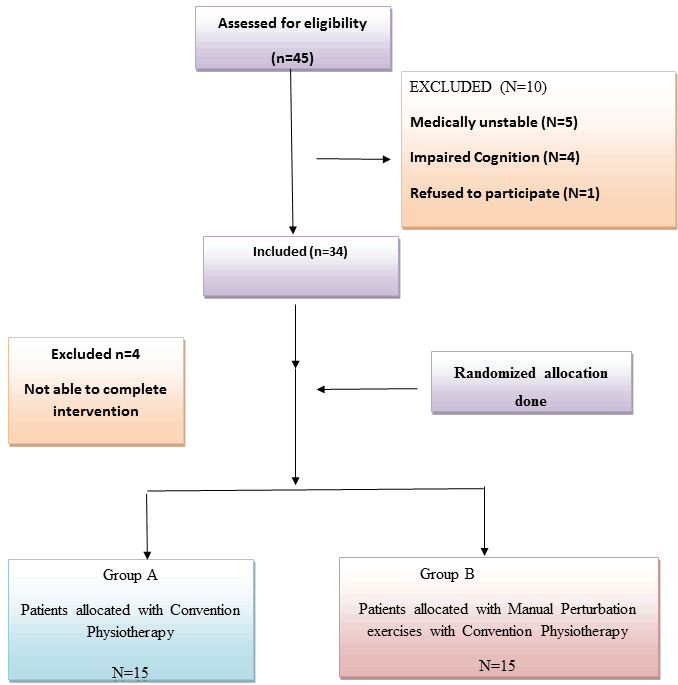 |
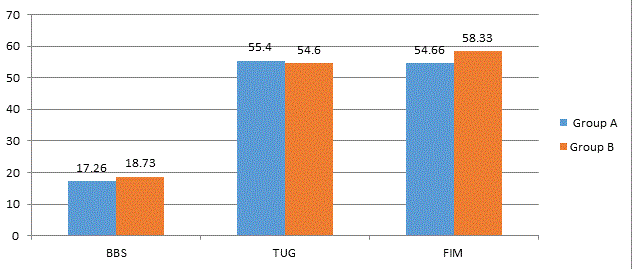 |
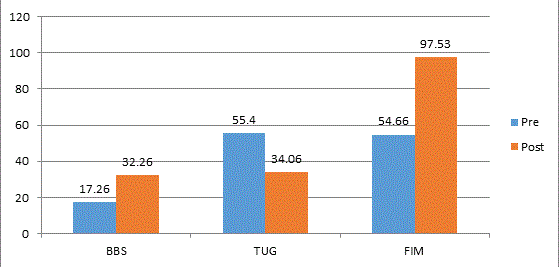 |
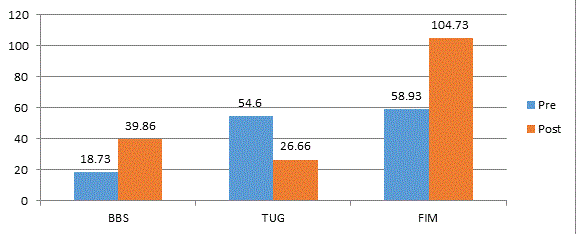 |
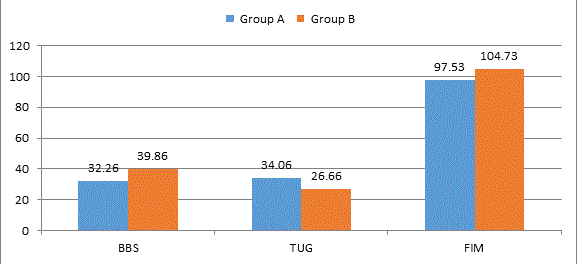 |
| Figure 1 | Figure 2 | Figure 3 | Figure 4 | Figure 5 |
Relevant Topics
- Electrical stimulation
- High Intensity Exercise
- Muscle Movements
- Musculoskeletal Physical Therapy
- Musculoskeletal Physiotherapy
- Neurophysiotherapy
- Neuroplasticity
- Neuropsychiatric drugs
- Physical Activity
- Physical Fitness
- Physical Medicine
- Physical Therapy
- Precision Rehabilitation
- Scapular Mobilization
- Sleep Disorders
- Sports and Physical Activity
- Sports Physical Therapy
Recommended Journals
Article Tools
Article Usage
- Total views: 14440
- [From(publication date):
April-2016 - Apr 02, 2025] - Breakdown by view type
- HTML page views : 13136
- PDF downloads : 1304
